1980 René Herse Randonneuse
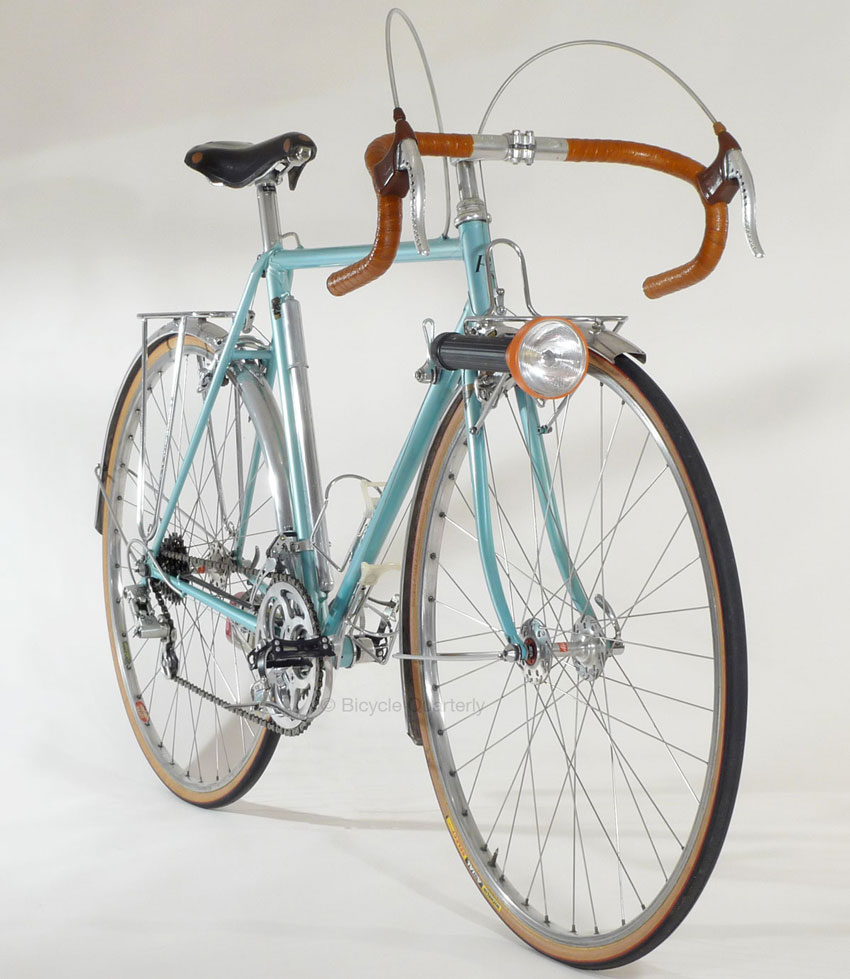
This René Herse Randonneuse is one of the last bikes made by the famous constructeur. It came to Seattle to be photographed for our book René Herse: The Bikes • The Builder • The Riders, and so I had the chance to study its many details.
René Herse died in 1976, and his son-in-law Jean Desbois took over the shop. Desbois had been among the very first employees of Herse, and he made many of the finest frames of classic René Herse bikes. When this bike was made in 1980, he had developed his own interpretation of the classic René Herse randonneuse – faithful to the original design, but carrying the signature of a new craftsman.
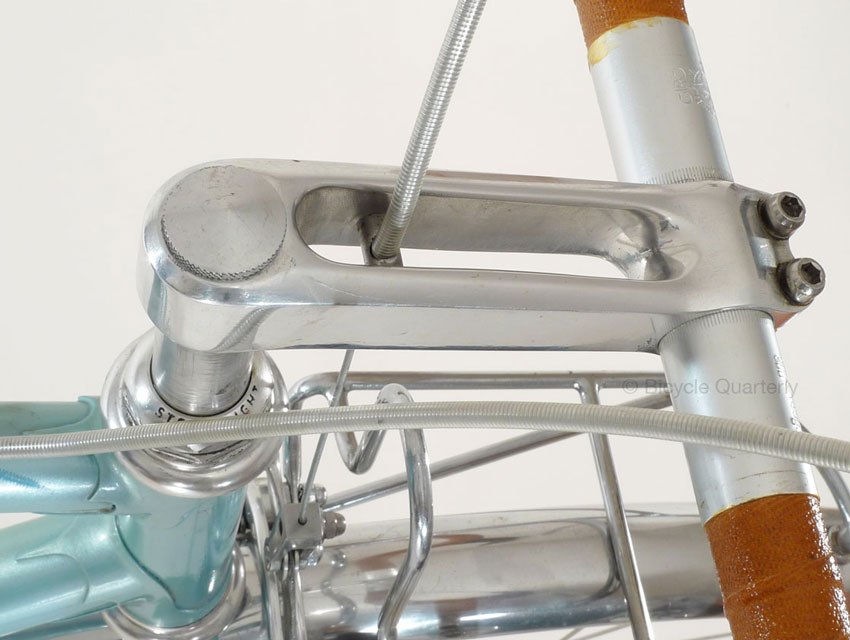
Most noticeable is the change to the iconic stem. The two-bar design remains, but the tops are fluted now. The reinforcement lip around the handlebar hole is deleted. Together with the Allen bolts, this gives the stem a much more modern appearance.
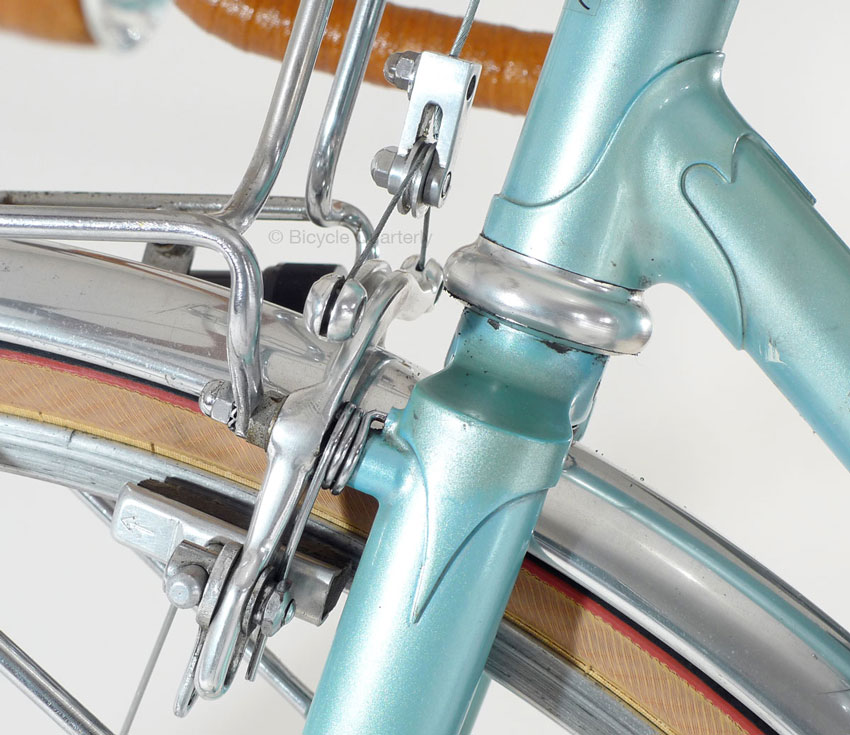
The fork crown has a much longer and less sculpted tang, and the top slopes slightly. However, the lugs retain their classic shape on this bike. (Others have a simpler shape.) And of course, the braze-on mounting of the Mafac brakes and front rack with Herse’s special bolts remains as before. The straddle cable hanger with its roller is a design Herse used from the first to the very last days.
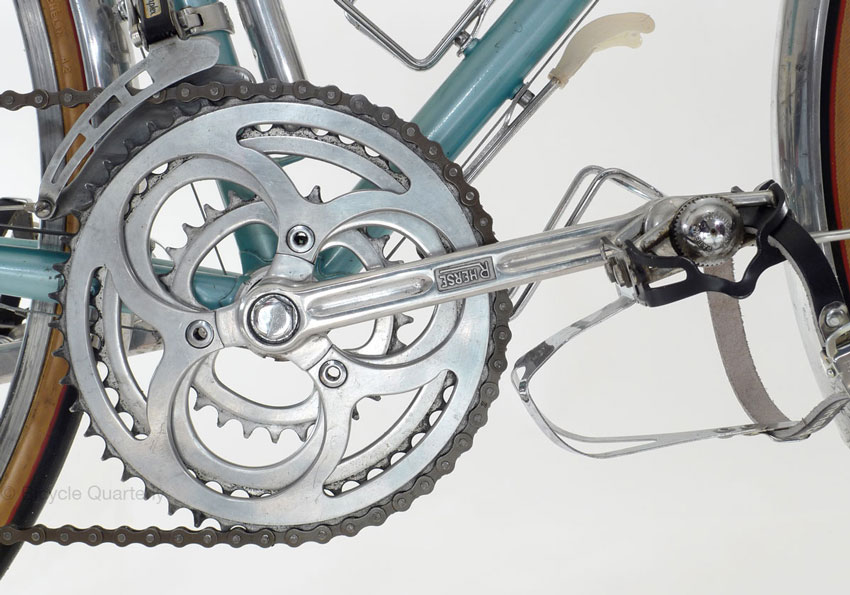
A René Herse cyclotouring bike would not be complete without the iconic cranks. The last models feature one minor change: Instead of the letters being recessed into the crank, they are inset in a square. This required a new forging die, so it’s safe to assume that the old one dies either wore out or were lost.
René Herse was a small maker, and cranks were forged in sets of 500, which meant that they didn’t place orders very often. Forging shops don’t keep dies around very long if you don’t place orders. On this bike, the cranks are coupled with three chainrings and Campagnolo “Superlight” pedals.
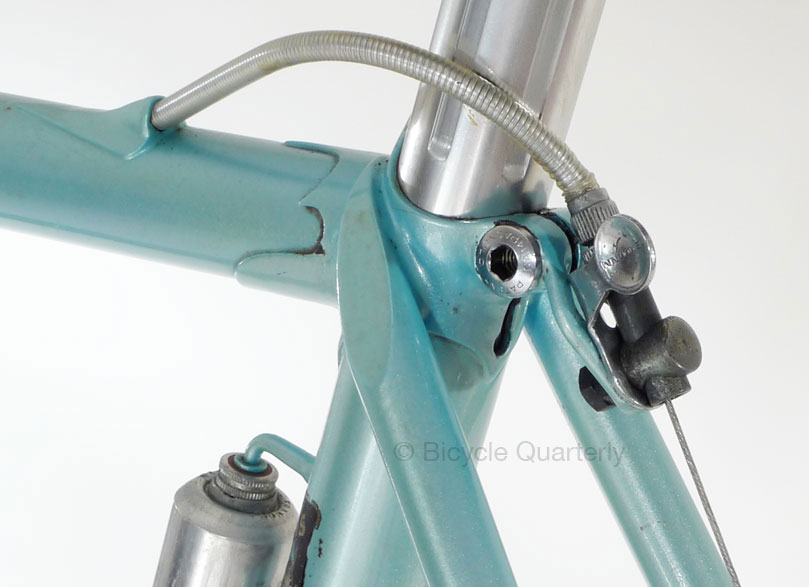
Jean Desbois was a practical man, and he felt that a brake quick release was a useful addition. Rather than bolt on the clumsy Weinmann releases, he made a braze-on hanger that incorporated the quick release parts.
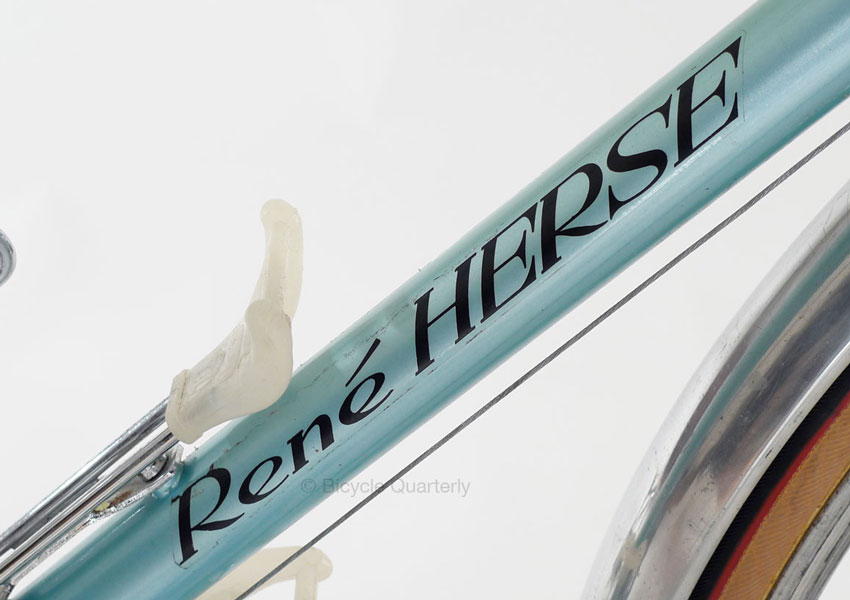
The signwriter who had painted the René Herse signatures by hand had died, so Lyli Herse had decals made. I like the old Art Deco lettering, but the 1980s were not a time for nostalgia, and this logo looked more up-to-date.
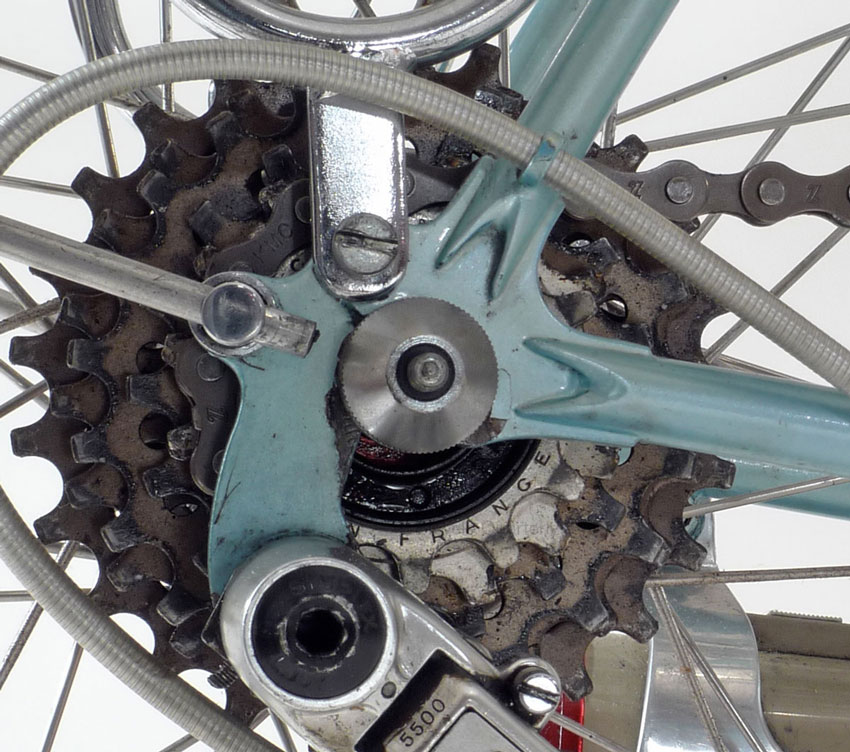
This is Jean Desbois’ interpretation of the Herse dropout treatment. The scallops are longer than before, giving the joint a lighter, pointier appearance. Most of all, the clean workmanship shows Desbois’ mastery with the torch. Desbois also made the dropout out of steel plate, using saws and files.
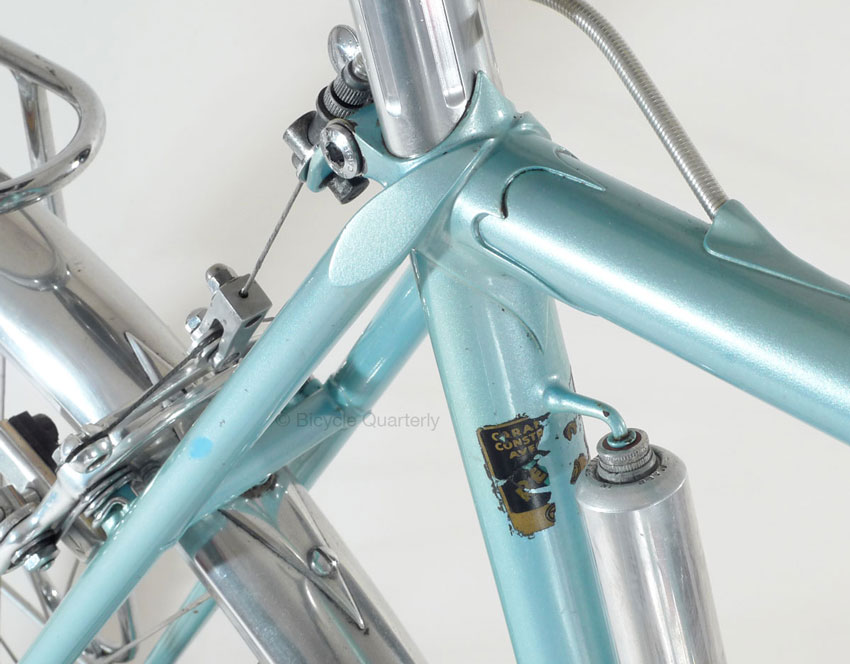
The beautifully thinned lugs and the crisp execution of the seat cluster are typical for Desbois’ work. There aren’t many builders who can braze a frame like this. This photo also shows the reinforcement for the fender at the seatstay bridge. René Herse came up with this design in 1951 after his daughter Lyli and Robert Prestat were disqualified from the Poly de Chanteloup hillclimb race when their tandem’s rear fender broke.
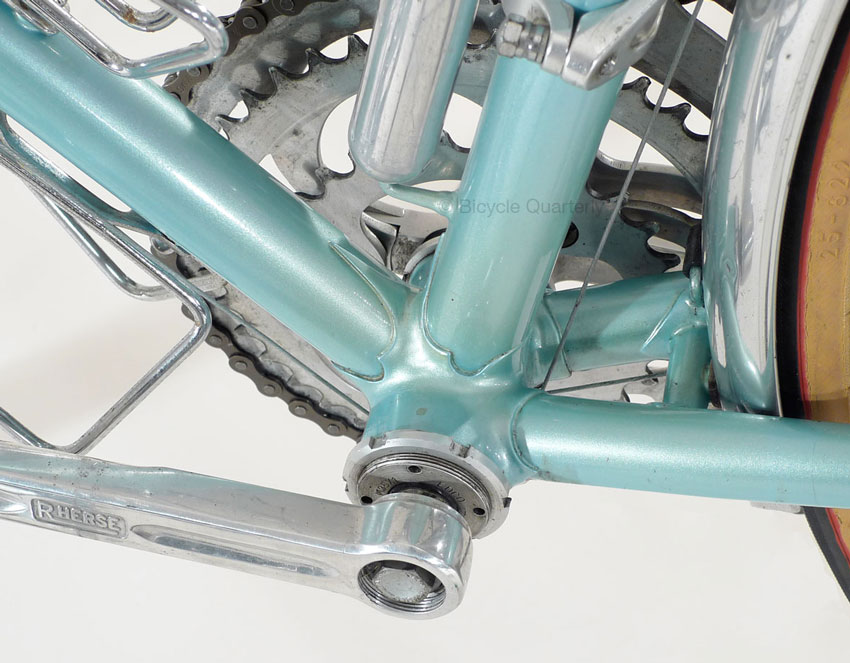
Desbois told me that he did not feel the need to make proprietary parts when excellent components were available, so he replaced the traditional René Herse bottom bracket with these Edco cartridge units. The bottom bracket shell has been built up with brass to smooth the sharp creases and give it more strength.
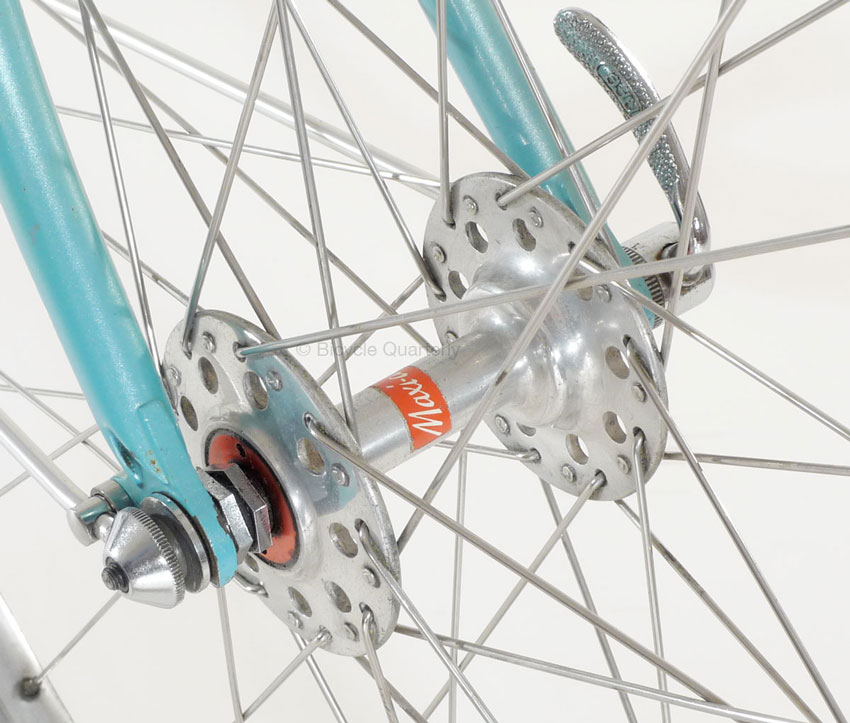
Maxi-Car hubs remained the hub of choice – in fact, their performance and reliability have not been surpassed even today.
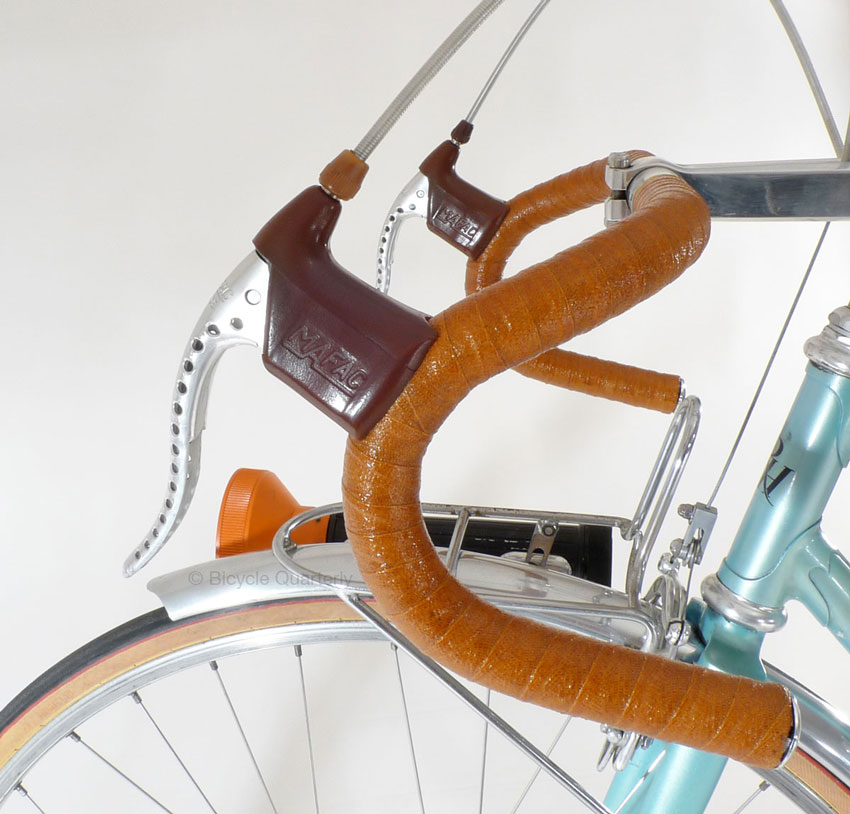
Many riders in the 1980s opted for modern handlebar tape, but this bike retains its shellacked cloth tape.
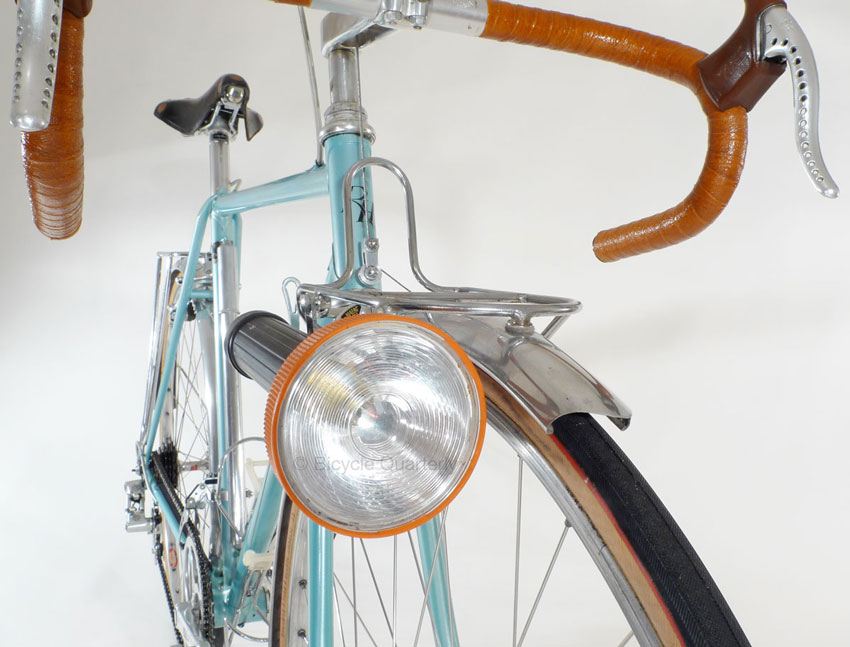
The rules for randonneuring no longer required generators, and many riders preferred battery-powered flashlights that had less resistance and more power. Batteries now were available at the controls. Desbois reinforced this flashlight before mounting it alongside the front rack.
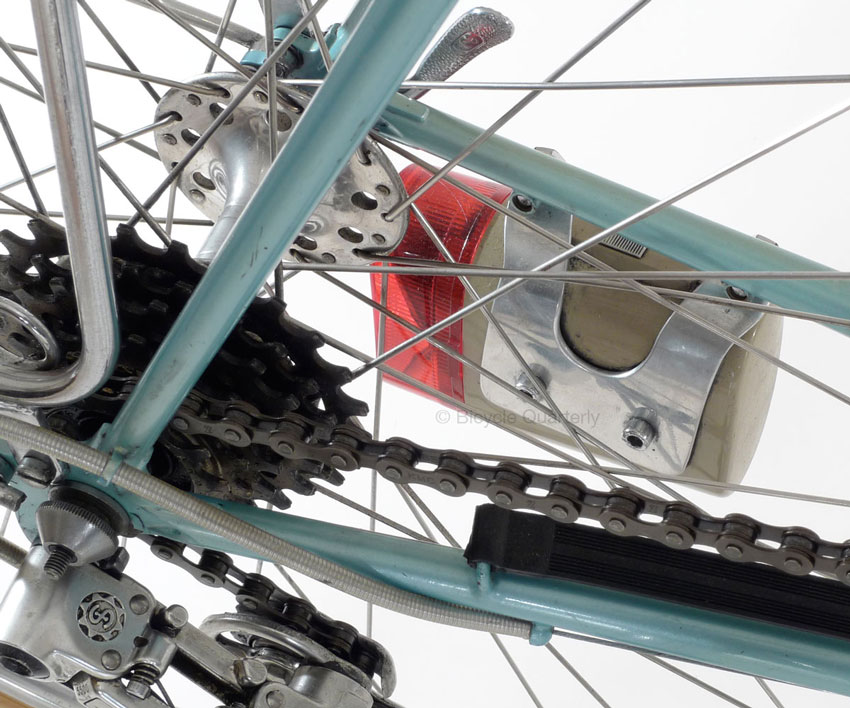
The taillight also is a battery unit, suitably reinforced and mounted to dedicated braze-ons.
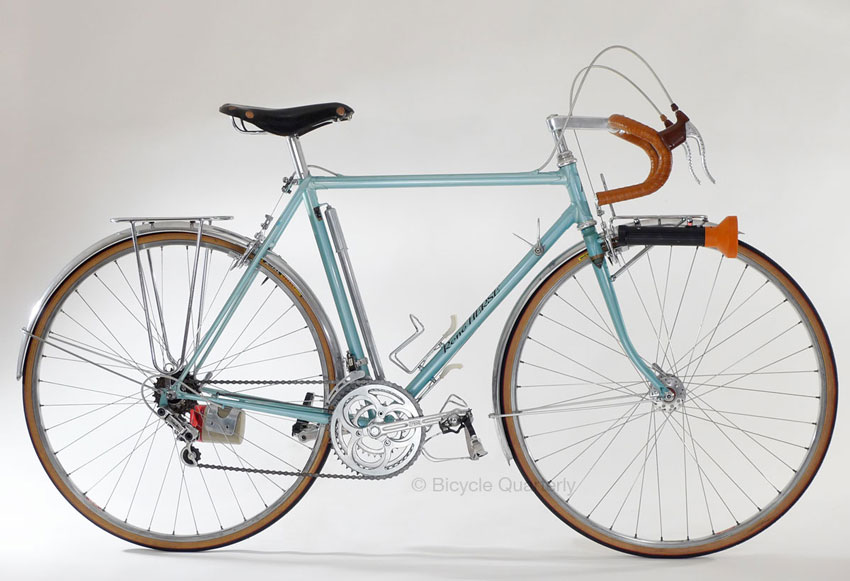
In the end, this wonderful bike was not included in the book. We simply had too many lovely machines for the chapter on the 1980s. How could we not include a fully chrome-plated camping bike with internal cables not only for brakes and derailleurs, but even for the generator’s remote control? Or the curved-tube Chanteloup tandem that was built specially for the Salon de Paris? Or Lyli Herse’s last racing bike, a superlight machine made by her husband as one of a matching pair? So I am presenting the bike here, and hope you can appreciate the craftsmanship and design that makes these last Herse bikes so appealing in their own right.
Click here for more information on the René Herse book, which includes studio photos of 20 René Herse bicycles, in addition to hundreds of historic photos, and the story of this famous constructeur and his riders.


